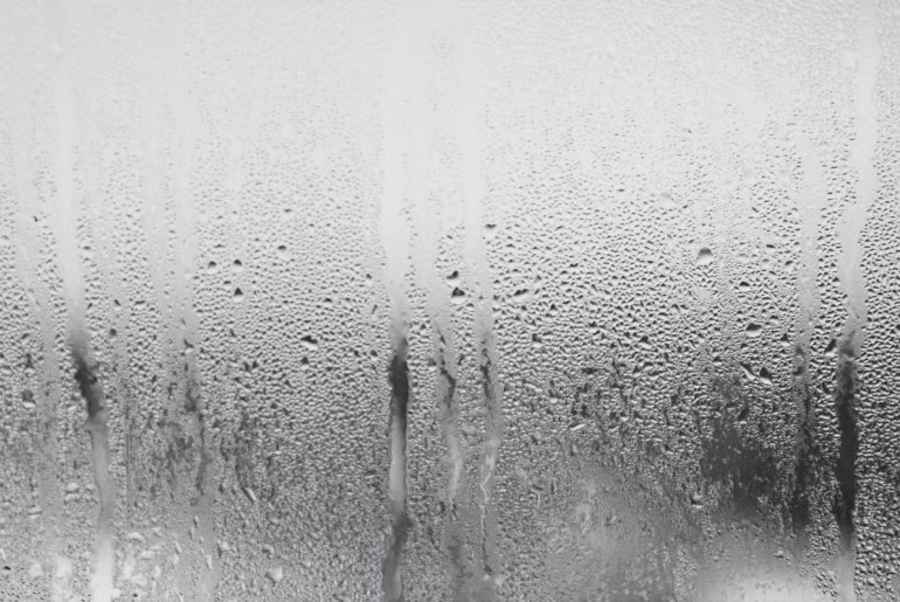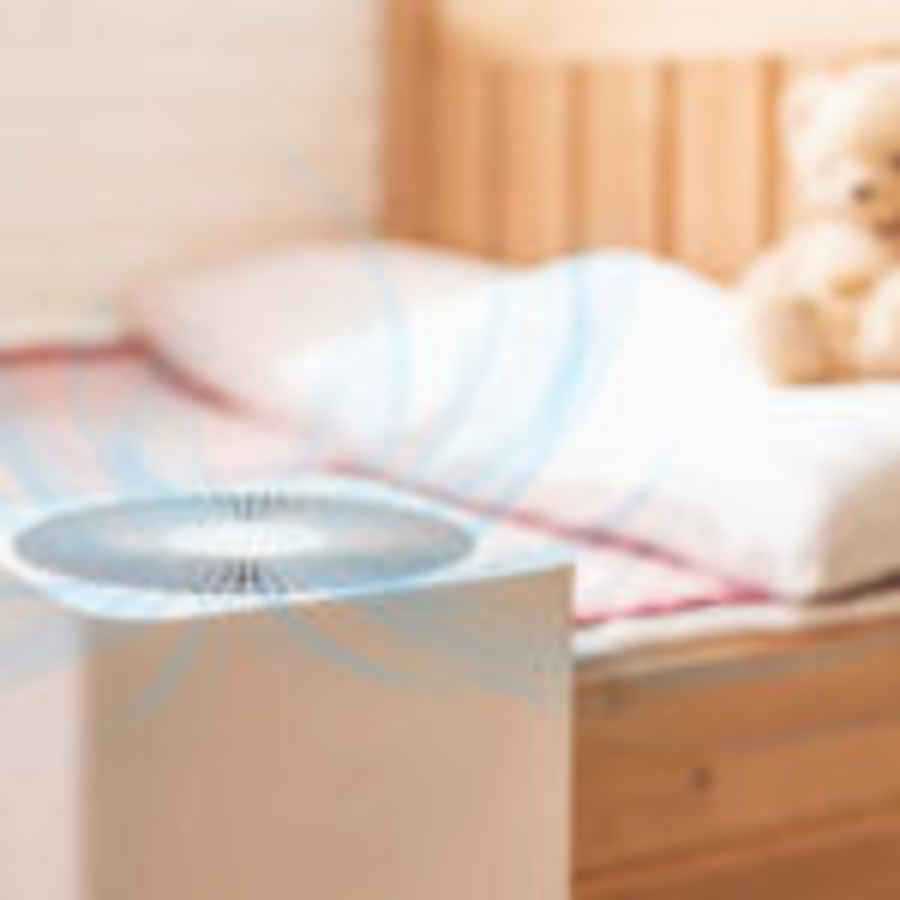First introduced in the 1970’s aluminium windows were the UK’s first introduction to double glazing. In their early days, you could even find aluminium windows installed as secondary glazing behind existing windows. But, it wasn’t until the early 80’s that they began to really boom.
Not just windows, but also front doors and patios doors were being made out of aluminium frames as they were installed in homes across the country. However, by the end of the decade, they began to be replaced by uPVC windows introduced from Germany. And, during the uPVC explosion of the 90’s aluminium windows, for the most part, became a thing of the past.
The problem is that, even today, some homes can still be found with these thermally inefficient frames which have a well-deserved reputation for creating a lot of condensation.
What Causes Condensation on Aluminium Windows?
To understand why aluminium windows are a proverbial magnet for condensation we first need to look at how condensation is caused within in the home, and most importantly, how the construction of aluminium windows make them predisposed for condensation.
What creates condensation?

More often than not condensation is not caused by building defects such as penetrating or rising damp but rather by a build of up excess moisture. This is especially true when it comes to condensation on windows.
All air can hold moisture and the amount of moisture it can hold is related to temperature. The warmer the air the more moisture it can hold. When warm air contacts a cold surface its moisture content is released as and deposits as droplets of condensation.
This problem is exacerbated during the winter when the outside temperature is much lower and ventilation within the home is reduced due to closed windows and doors. This creates the perfect conditions for condensation for 3 main reasons:
- Firstly, the air is warm because it is being heated.
- Secondly, the moisture we create by bathing, cooking, washing clothes and even breathing is trapped in our homes.
- Finally, exterior facing surfaces such as windows are cooler because the ambient temperature outside is lower.
This gives us the key components for condensation to form; warm, moisture-laden air and cold surfaces.
Why the construction of aluminium windows make them predisposed for condensation
Materials such as metal, in this case aluminium, have a high U-value. In building parlance, a U-value relates to the insulating properties of a building material. The higher the U-value the lower its ability to insulate.
When you couple this with the lack of a thermal break (an insulating barrier) between the exterior and interior frames of old aluminium windows it is easy for the frames to lose heat as temperatures drop. This causes the interior of the frame to become virtually as cold as the exterior frame and creates the perfect cold-spot for condensation.
Tips To Prevent Condensation On Aluminium Windows
Because of their thermal inefficiencies, it isn’t easy to tackle a condensation problem on aluminium windows and many suggestions usually start by recommending you replace your windows. But doing this isn’t cheap and if you’re in rented accommodation it is also unlikely your landlord will do this either(!).
With this in mind here are our most effective tips you should follow to help eliminate condensation within your home:
1) Use a Dehumidifier

Many people only consider a dehumidifier useful for eliminating mould. The irony is that a dehumidifier doesn’t kill mould, plus its versatility and knock-on benefits make it the ideal tool for controlling, and in some cases eliminating, condensation entirely.
Firstly dehumidifiers actively lower the humidity within your home. Decreasing the amount of moisture the air contains and making it much harder for condensation to deposit, even on cooler surfaces. Many can be configured to automatically monitor and lower the humidity level within the home. Switching on and off as required to maximise energy efficiency whilst still remaining effective.
Secondly, many dehumidifiers sport a motorised louvre. This can be used to direct dryer air exiting the machine towards a focal point. Increased air-flow helps dry surfaces quicker. Setting a dehumidifier near condensation prone windows makes it difficult for condensation to be deposited and ensures it is removed quickly if it does develop.
Thirdly, dehumidifiers warm the room in which they operate. On average the air exiting a dehumidifier can be 3-5 degrees warmer than the ambient temperature (this is especially true of desiccant models). Reducing the need for additional heat sources and creates an environment less conducive for condensation.
2) Window Vacs
Despite being designed to clean soapy water and dirt off windows, window vacs are also incredibly effective at slurping up condensation.
They provide a quick and easy way to remove volumes of condensation without resorting to towelling the moisture off. The water they collect can also be emptied away and out of your home. Whereas a damp towel will need to dried, releasing the moisture it has collected back into your home.
It is important to note that is not so much a prevention as a removal tip. And, whilst effective, window vacs will only remove the symptom of condensation and won’t address the underlying cause. That said, they provide a convenient and cost-effective solution to remove condensation and will help prevent the growth of mould and the associated damage it causes.
3) If You Dry Washing In Your Home Do This

Tumble dryers gobble electricity and with ever rocketing energy prices it is no wonder many of us opt to dry washing on radiators and clothes horses during the colder times of the year.
The problem is drying washing indoors in this way releases a lot of moisture into the air. To limit the moisture build-up we recommend you:
- Dry your washing in a single room only
- Keep the door to the room closed to prevent moisture spreading throughout your home.
- Ventilate the room and allow the moisture to escape by keeping the window on latch or slightly ajar
- You could even use a draught excluder at the base of the door to stop any chilly drafts from the open window cooling the rest of your home.
4) Trap Humidity At Its Source & Remove It
It’s not difficult to identify where most of the excess moisture in the standard home is created – the bathroom and kitchen. Boiling pans, hot showers and steaming food all release moisture which can quickly spread around the home and ultimately contribute to condensation.
A simple tip is to keep your bathroom and kitchen doors firmly closed during and even after use, to prevent moisture spreading. You should also use your extractor fan, if you have one, to help suck humid air out of the rooms.
It is important to note that you’ll need to leave the fan running for at least 10-15 minutes after you’ve finished bathing/cooking, otherwise the fan won’t have sufficient time to adequately lower the humidity level.
5) Keep An Eye On The Humidity Level
It’s not always easy to see, or even feel, when moisture builds up in your home. That is unless you have a hygrometer. These devices usually resemble small clocks and show the relative humidity (RH) within your home.
The generally agreed-upon ideal relative humidity within UK homes is around the 55% mark. Although on colder days try to aim for 45%. If your RH rises above this you can take action such as opening windows or switching on a dehumidifier.
6) Should I Use A Moisture Trap?
We’re often asked about moisture traps in situations such as these. And, ultimately, we wouldn’t recommend them.
Moisture traps passively attract water from the surrounding environment and even the most ‘powerful’ of units can only pull in 500Ml of water over the course of several months. Making them unsuitable for anything other than the minor damp/humidity issues in small cupboards or cars.
Should I Worry About Condensation On The Outside Of My Windows?
Surprisingly this is a more modern phenomenon, occurring mostly on energy-efficient double or tripled glazed aluminium and PVC windows. It also a concern for many homeowners who incorrectly assume there is a fault with their windows, whereas the opposite scenario is true.
As we know condensation likes to form on cold surfaces. But because new windows are so thermally efficient heat cannot escape through the glass, as it does in older windows, and the outside pain is not heated as much.
This means condensation on the outside of your windows is actually a good thing. It shows your windows are efficiently trapping more heat in your home.
Do Modern Aluminium Windows Suffer From Condensation?
Modern aluminium windows are light-years ahead of their inefficacious counterparts of previous years. The introduction of polyamide thermal broken systems means the interior frame no longer leaks heat to the exterior frame, creating the cold surfaces which are prone to condensation.
Not only this but aluminium frames are also very environmentally friendly. This is because they can be recycled an indefinite amount of times and the energy required to recycle and reuse them is only 5% of that required to create the metal initially. This is an important consideration in these environmentally unstable times.
Conclusion
The old style of aluminium windows are the product of a by-gone era creating 21st-century headaches. And, whilst it is possible to keep condensation on them under control, it is difficult to eliminate this problem entirely.
But, we hope this guide has shown you some simple, cost-effective and above all realistic ways you can reduce the amount of condensation on your windows and how to remove it simply and quickly when it does occur.






